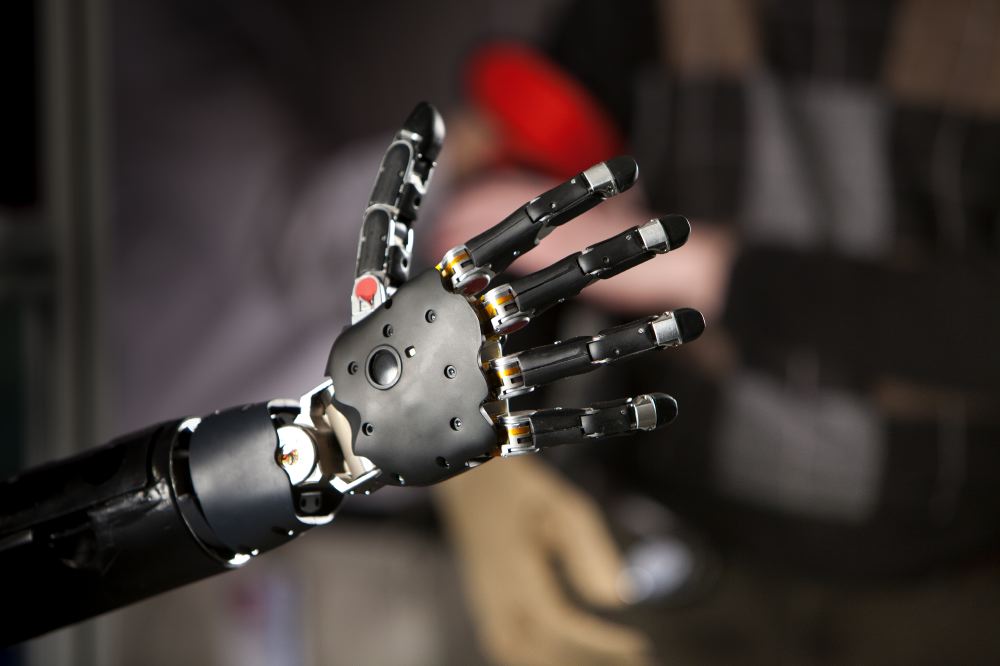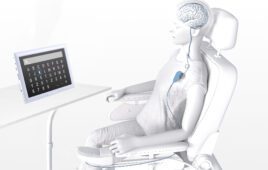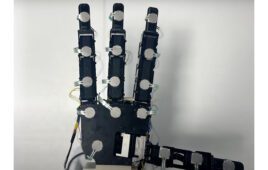
(Credit: Wikimedia Commons)
Advanced prosthetic limbs and eyes as well as brain-machine interfaces are harnessing existing neural circuitry to improve the quality of life for people with sensory impairment, according to studies presented today at Neuroscience 2017, the annual meeting of the Society for Neuroscience and the world’s largest source of emerging news about brain science and health.
Millions of people around the world are unable to fully use their bodies or senses due to disease, injury, or amputation. At best, modern therapies and prostheses only partially restore function. Over the past 20 years, advances in biomedical engineering have led to the development of interfaces between prosthetic devices, the nervous system, and human tissue that are enhancing the effectiveness of biomedical devices.
Today’s new findings show that:
- Neural signals from an extracted rodent spinal cord can control cultured muscle fibers in a petri dish, providing a new technique for studying how the nervous system directs movement (Collin Kaufman, abstract 781.11, see attached summary).
- A tetraplegic patient can learn to adapt neural activity to maintain control of a brain-machine interface in the face of technical challenges (Sofia Sakellaridi, abstract 777.06, see attached summary).
- Restoring sense of touch through an amputee’s prosthetic hand improves motor skills, reduces phantom pain, and provides a sense of hand ownership (Jacob Anthony George, abstract 642.04, see attached summary).
Other recent findings discussed show that:
- A fully organic retinal prosthesis, made of layers of photosensitive polymers and silk, led to vision-related brain activity and behavior in blind rats (Jose Fernando Maya-Vetencourt, abstract 683.02, see attached summary).
“Unlike many pharmacological or biologic therapies to help people with neurological injuries or disease, engineering solutions have the potential for immediate and sometimes dramatic restoration of function,” said press conference moderator Leigh Hochberg of Massachusetts General Hospital, Brown University, and the Providence VA Medical Center, and an expert in neurotechnologies. “It is really exciting to see how the growth of fundamental neuroscience and neuroengineering research over many years is leading to the creation of technologies that will help to reduce the burden of neurological and psychiatric disease.”




